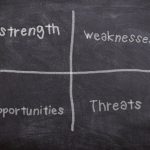Strategic Planning
A strategy for core work of an organization
Did You Know?
Strategic planning is the core of the work of an organization. Without a strategic framework you don’t know where you are going or why you are going there. So, then, it doesn’t really matter how you get there. Most organizations have developed some form of a strategic plan, even if they have not formalized it. They generally know what products and services they offer, who they offer them to, and where they offer them. But formalizing your strategic plan, following it and updating it on an annual basis will result in increased productivity, better customer service and more return on your investment (ROI).
We recommend strategies be as simple and specific as possible. They usually address eight key topics:

1 .Blueprint
This is the overall plan that describes the value proposition (or foundation and purpose); the strategic goals and objectives that must be met (such as having happy customers, happy shareholders and happy employees); the core values (such as integrity, dedication and perseverance); the mission (what it is the company or agency performs or provides); and the vision (what we strive to become and would do under perfect conditions).

2. SWOT
This is an analysis of your Strengths, Weaknesses, Opportunities and Threats. Some strength can also be weaknesses.

3. Corn, Trees and Campuses
This is a simple, but specific list of short-, mid- and long-term goals. For most businesses and agencies, we would define short-term as one year, mid-term as three years, and long-term as five to 10 years. Some companies and large agencies actually create 20-year and even 50-year strategic plans. The concept is that you can get started moving in the right direction toward those very long-term goals versus having different people moving against one another in multiple directions. The golf analogy is that you typically cannot see the pin on a par-five hole, but you know which direction to begin hitting the ball in order to eventually sink the putt.

4. Competitive Intelligence
A structured analysis of the competition should be based on the SWOT results, and will provide guidance on where you really measure against the rest of the playing field. A “status quo” attitude of your customers also can be considered competition.

5. New Market Penetration
Typically a strategic plan will include analysis of potential markets you should consider entering. You need a plan that includes an honest assessment of how much money and effort it will require, and what the ROI will be, to enter a new area. For companies, the hardest thing to do is to sell new things to new customers.

6. Organic Growth and M&A Analysis
If you have a plan to grow your business by X percent per year, you need to consider whether it will all be from organic growth (where you hire new employees and/or do more with less), or by acquiring other businesses. It is easier to maintain your corporate culture under organic growth, but it can take much longer than buying another company and merging its culture with yours.

7. Corporate Due Diligence
Companies should measure their employees’ performance, and assess how well their equipment and other resources are working. But what do you measure against? Developing the yard stick can be the most difficult aspect of assessing yourself. But there are lots of tools out there and consultants who know how to use them! At the end of the day, it boils down to looking at you in a well-lit mirror. Maybe one that has magnification capability.

8. Talent Development and Retention
It is true that your employees are great assets. So how do you continue to develop them, and then retain them as they grow? Sometimes your staff grows beyond what you can offer them. If that happens, pat yourself on the back for providing excellent training and professional development services. Wish them well, and then go back and see how you can keep growing your business. You also should expect that some people will leave, no matter what you have to offer.

